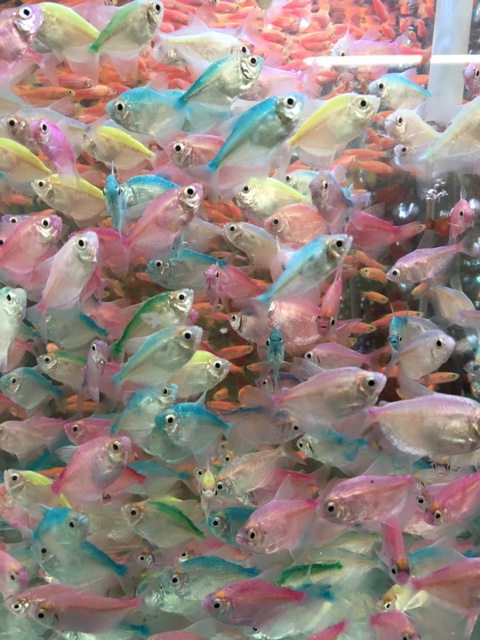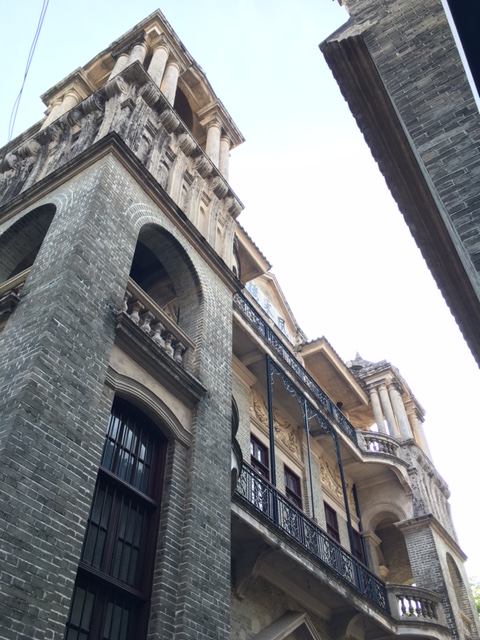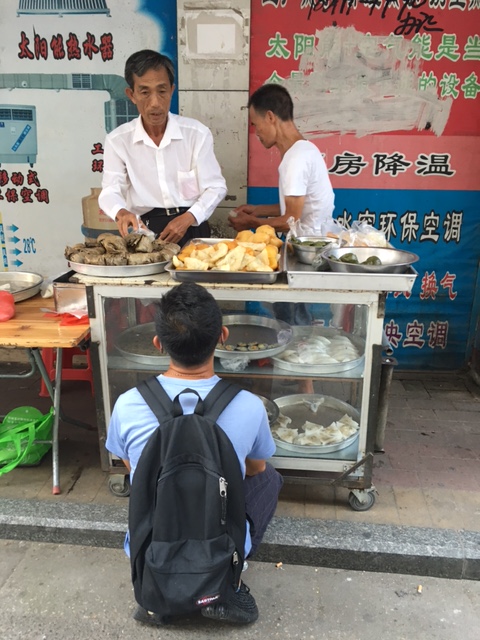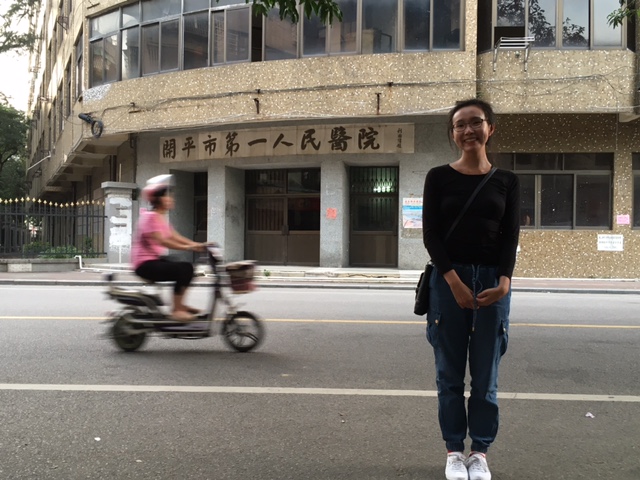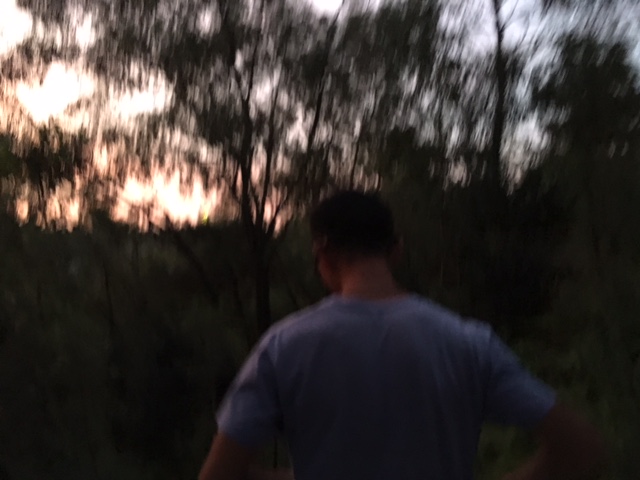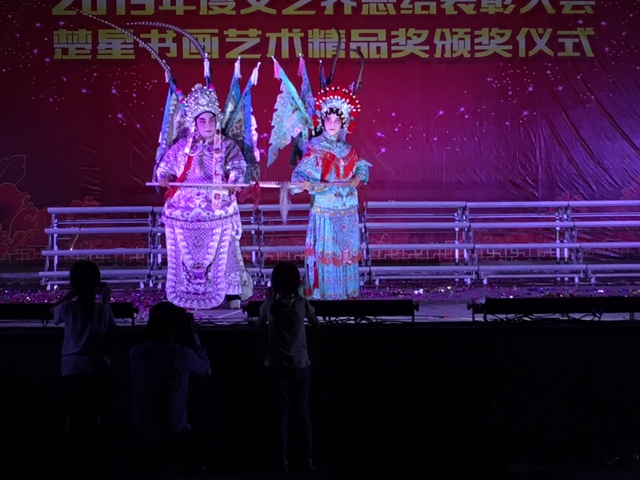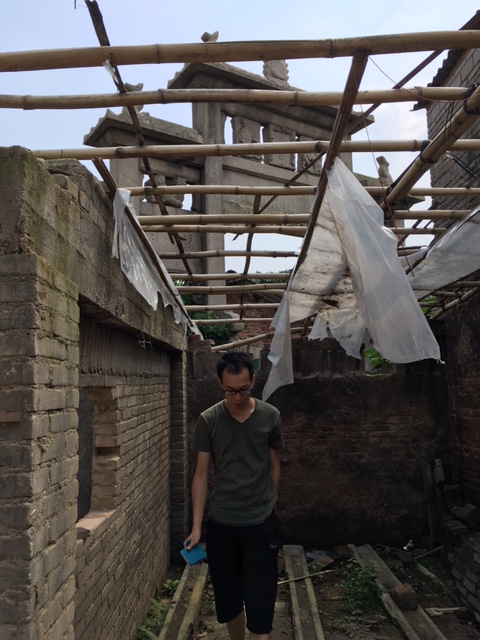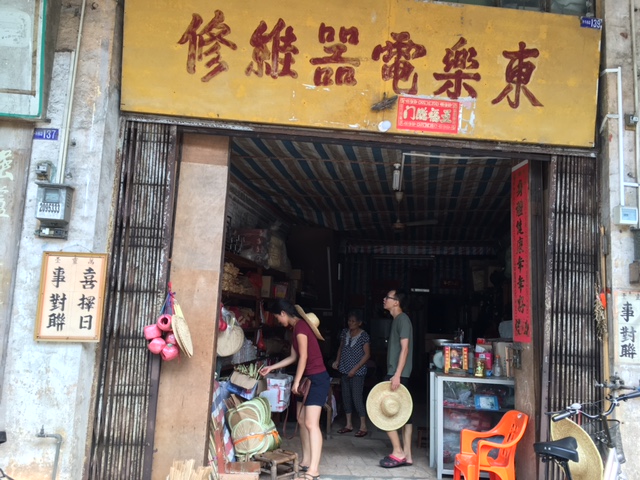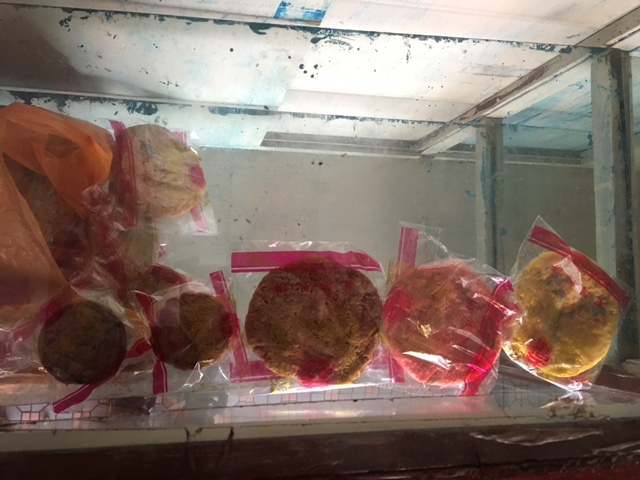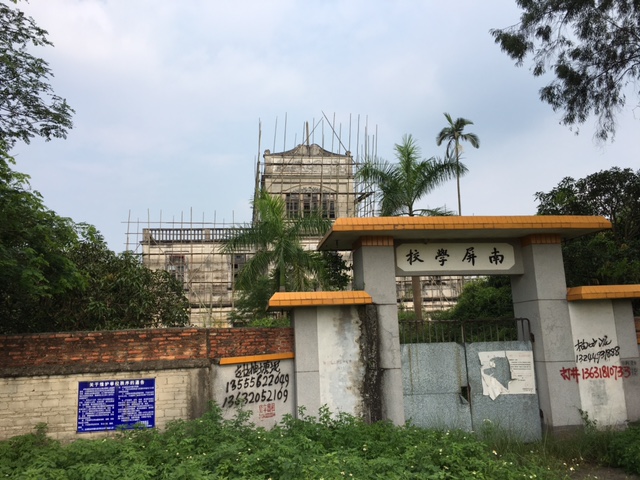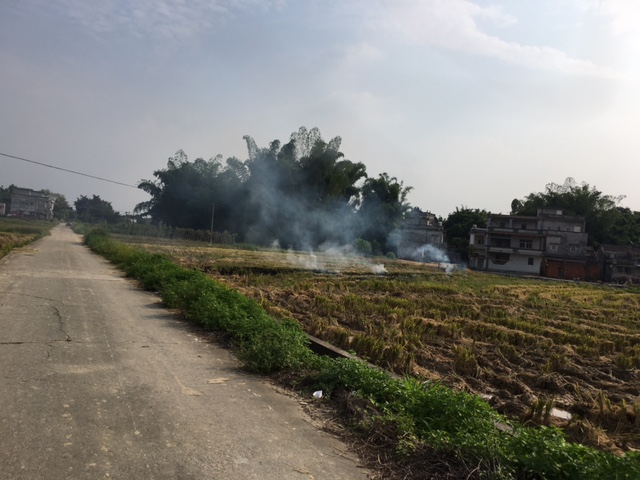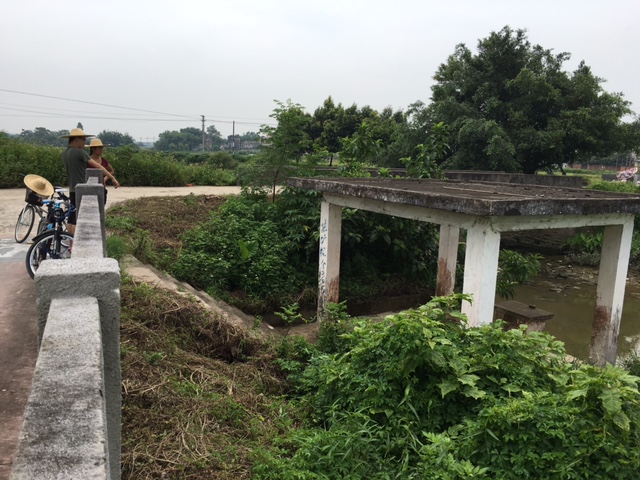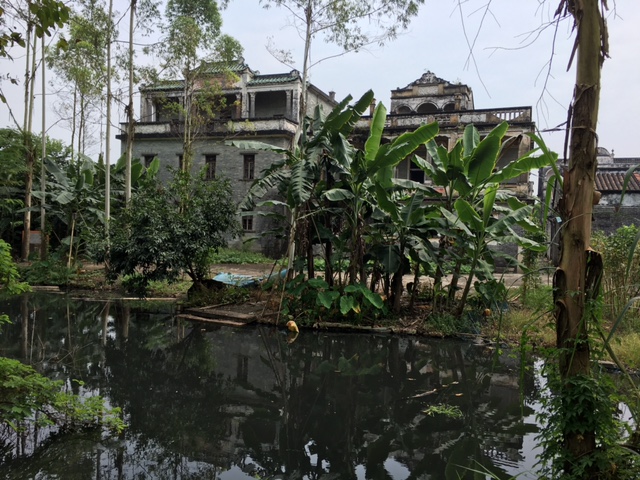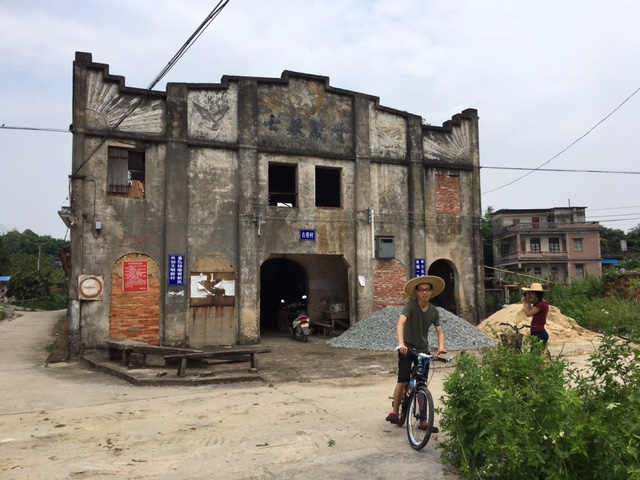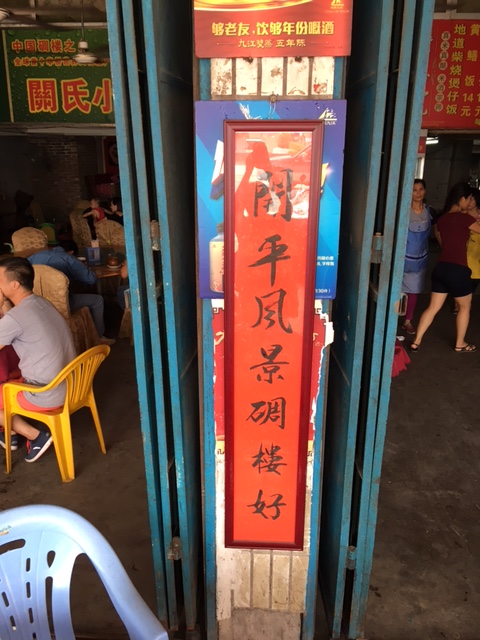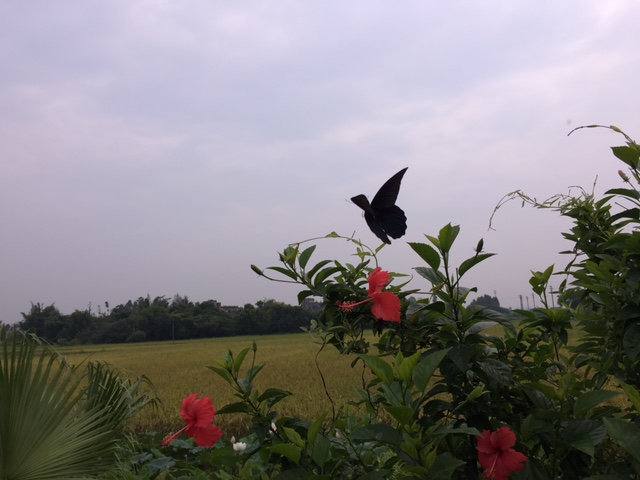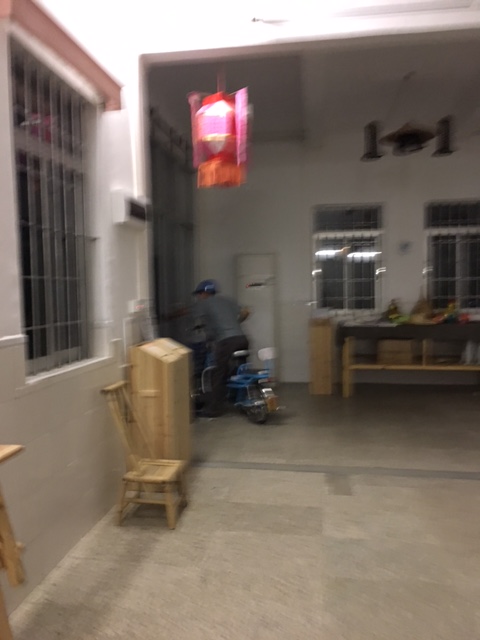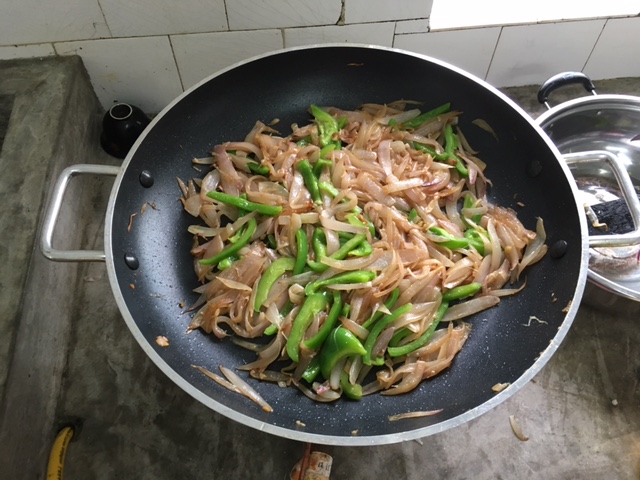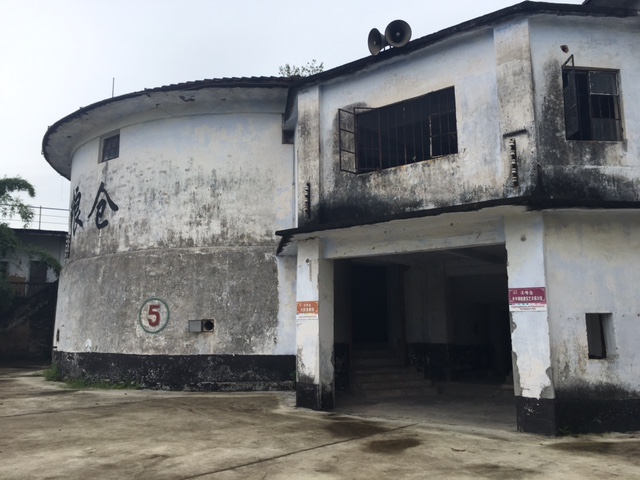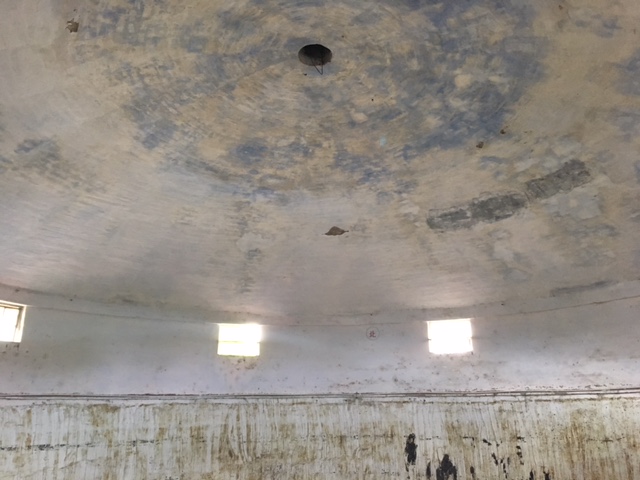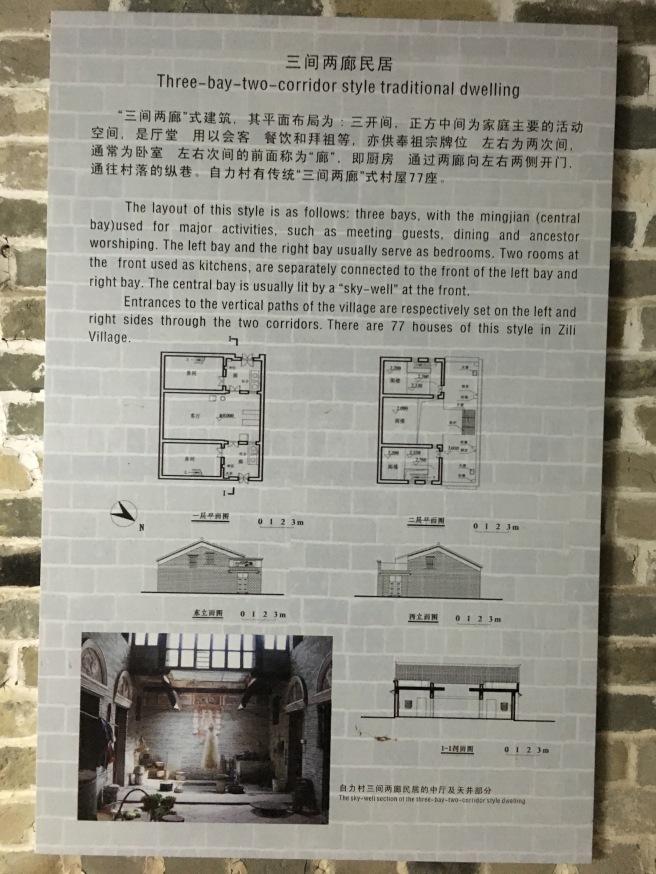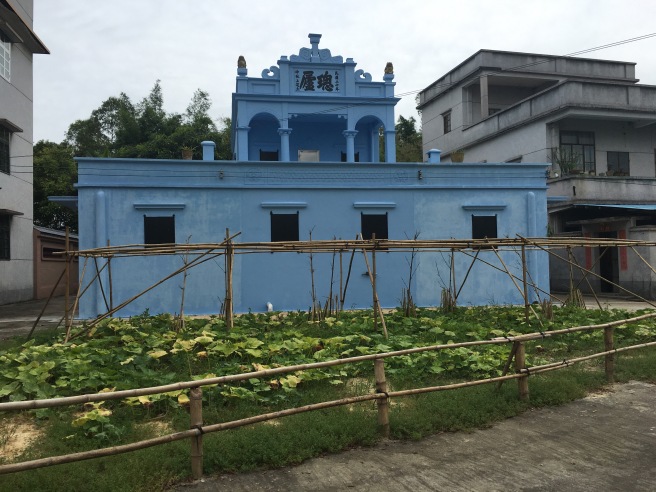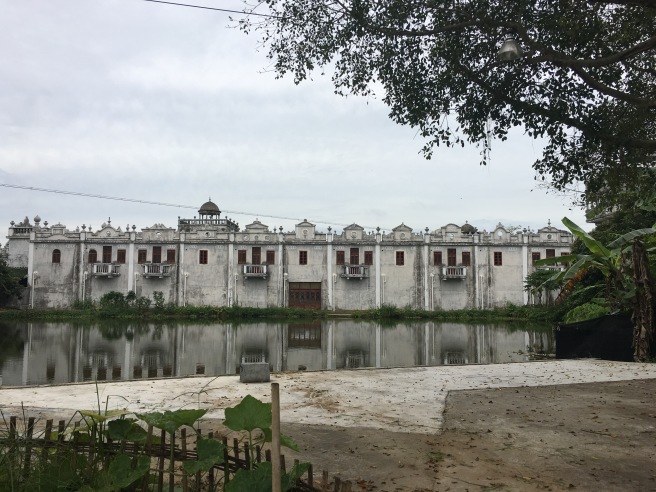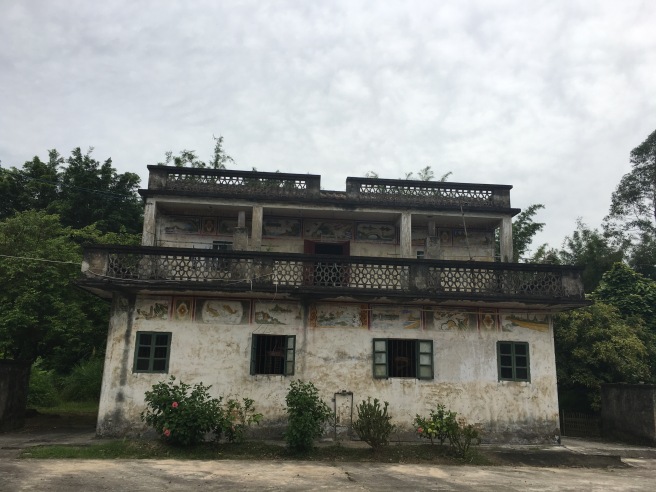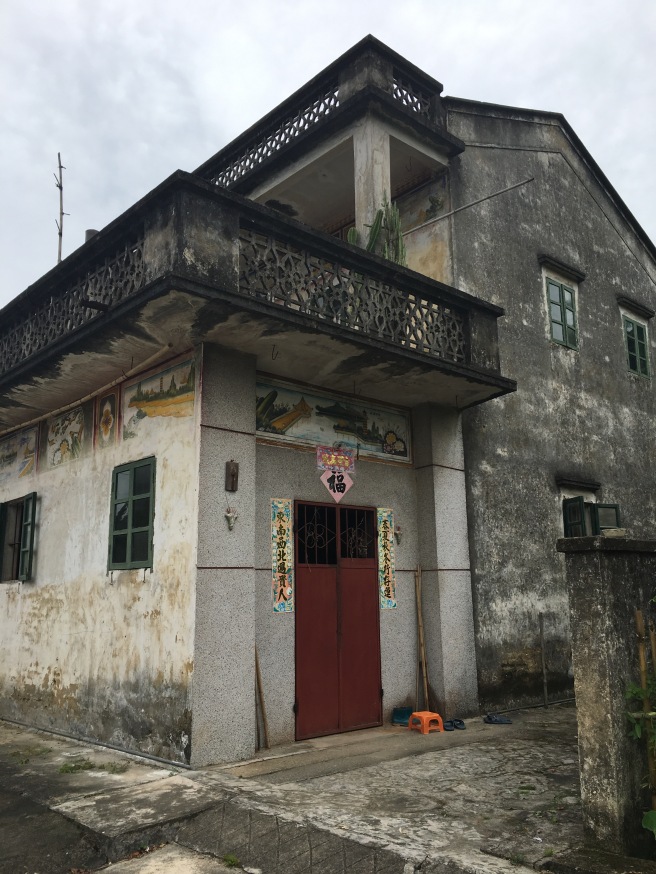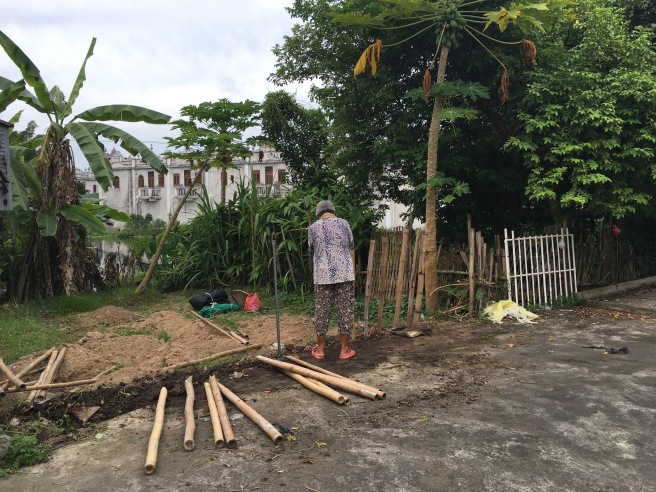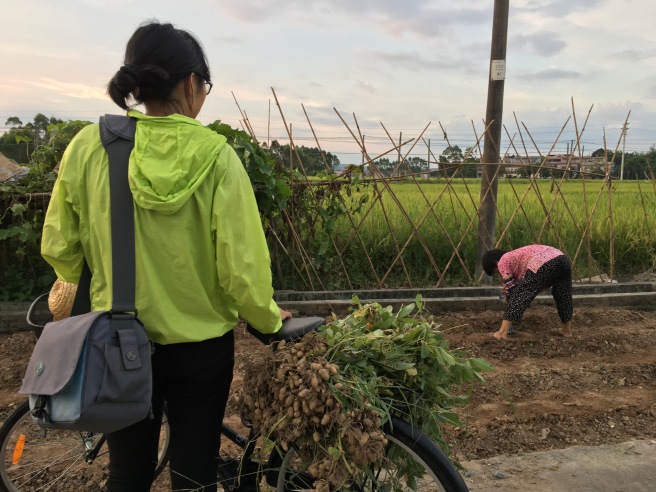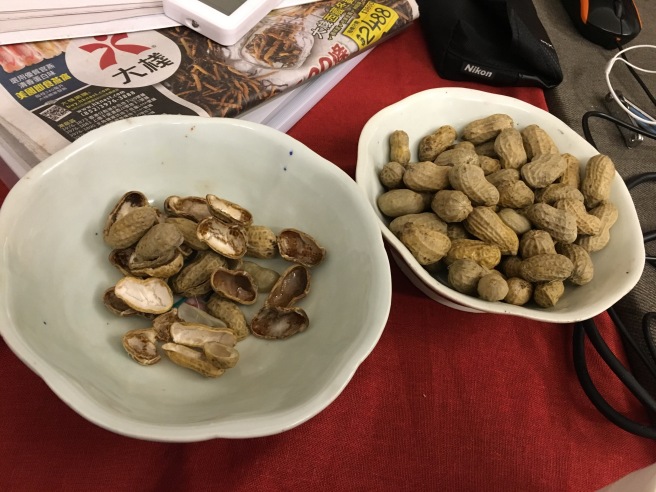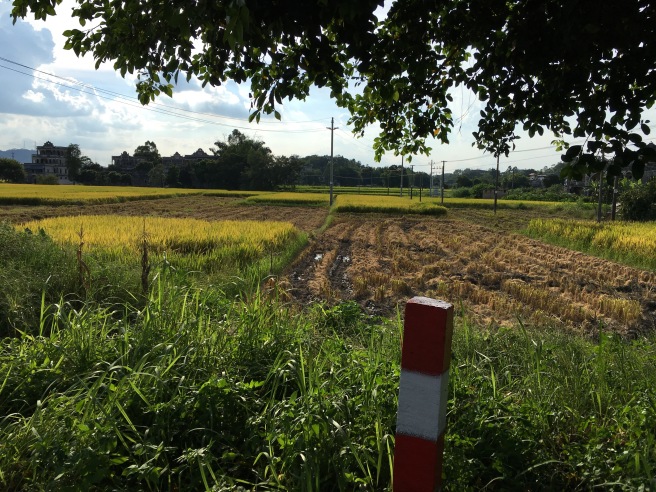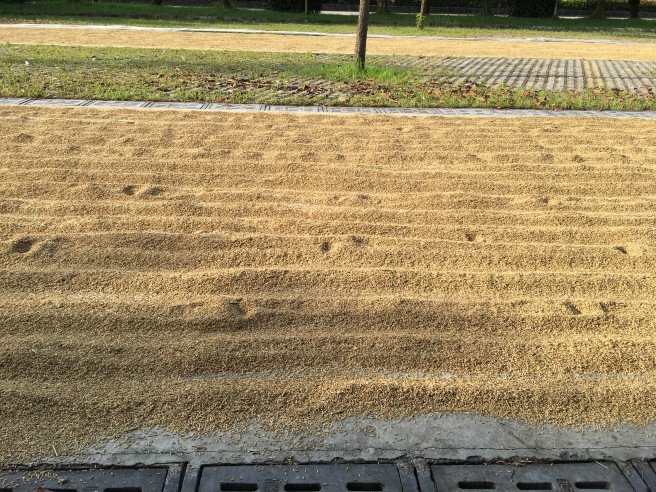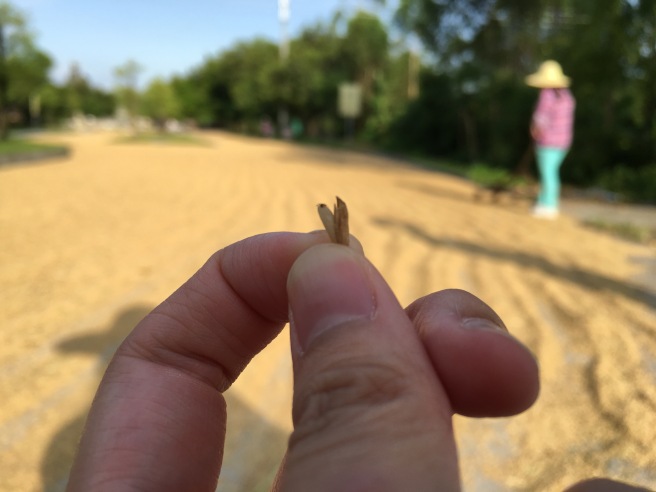About two weeks ago, Jim and I were buying iced 王老吉 drinks from a local shop, and we were chatting with the shopowner. The auntie asked us if we were tourists from downtown Kaiping, and I said no, we were living at a hostel that used to be the old post office in Tangkou. She then asked us where we worked.
Jim said, “You know the village across from the Li Gardens (立圆)? Cangdong Village? We work there.”
“Oh, I know that village. I live in the next one over. But what sort of work do you do?”
“You know how there are two old ancestral halls? They look kind of like diaolou, really fancily decorated? Well, a professor named Selia Tan restored them. She’s from Kaiping, and she was the key person who helped write the Kaiping diaolou’s application for the UNESCO world heritage list.”
“Hm… Ok. So you do construction?”
“Haha, well, we do a bit of this and that every now and then. But usually, we just have a lot of students from all over the world coming to study at the restored ancestral hall.”
~
Besides Professor Selia Tan, The Cangdong Project is also led by business partners Rocky Dang and Peter Stuckey. They both live in Hong Kong but they both visit Kaiping and Cangdong fairly often. I have only recently met Peter, but what I understand about Rocky is that the Cangdong Project for him is a retirement experiment founded upon the respectable partnership between him and Professor Selia Tan. Their Cangdong Project promotes the common values of cultural heritage conservation, sustainable revitalisation and development, and community empowerment, all based in the particular location of Kaiping.
The Cangdong Project distinguishes its cultural conservation from cultural preservation. Preservation evokes museums and fossilizing concepts. I think that respecting and allowing for the natural continuity of people’s ways of lives is really important for Professor Tan. It’s not enough to clean up old buildings and restore them to their former glory. When Professor Tan first renovated buildings in Cangdong Village back in 2011, she and her students invited local builders and local artisans who still practiced fresco paintings, stucco decorations, and wood carvings to aid with the renovation projects. When Rocky talks about restoring new buildings, it seems to me that the most important question for him is what function would the newly renovated architecture be able to serve for the village, or possible visiting educators and students. And this is also why the China Citic bank’s buying out of Chikan is such a hot topic at the Cangdong Project – because they exemplify the exact opposite of what the Cangdong Project aspires towards when it comes to conservation. I have heard that Professor Tan could talk herself blue in the face about Citic and Chikan.
Sustainable revitalisation and development goes hand in hand with the whole idea of respecting people who still live in the place you want to develop. Developing an entire waterfront town into a tourism neighbourhood to improve the local economy sounds good until we understand that you plan to kick out all the people who live there and you’re going to raise the rent on all the poor shopkeepers who sell super low-price local goods. If a revitalisation project ends up neglecting a portion of the people (and it’s almost always usually the poorest, most wretched class of people) then it is not revitalisation. We call that gentrification.
When we keep treating people like their ways of living are not worth respecting, that their livelihoods are unimportant, well, they might begin to actually think that it is true. Professor Tan and Rocky seem to prefer the translation “community empowerment,” though I’m not sure what the Chinese is.
As young people, we all at one point entertain the thought that we’d like to do some good in the world. Some of us have the privilege of going on break-out trips to inner city neighbourhoods or visiting third world communities in other countries. But if we are critically thinking when we embark on these volunteering opportunities, we could find that our service efforts can be oddly unfulfilling, and may cause us to not only be bothered by our inadequacy to make a difference but even feel deeply disturbed by the simplicity with which we can walk away from people in real and drastic situations after doing basically nothing besides take pictures and eat the local food.
Alright, perhaps I am only speaking for myself. I am thinking about myself from only a couple of years ago. But what goes around comes around, and I feel like the question that I sent out to the universe those years ago has boomeranged back at me this summer. I think that observing the Cangdong Project has shed some light on those uncomfortable and inexpressible feelings that I had back then.
Effecting change on a community seems super important and noble, but if you don’t have the conscious permission and willing cooperation of the said community, you’re ridiculous. You’re not noble and you’re the opposite of important. You’re a just tourist with a savior complex.
How do you get conscious permission and willing cooperation of the community you want to change? Well, you might have to get down and dirty. Learn the Kaiping dialect (or, if you’re Professor Selia Tan, you were already raised to speak it). Live in the village. Make friends with the people whom you claim you care about. And learn about what they want. And help them get what they want, not what you want.
~
I also have to add how endlessly impressed I am that everyone who works at Cangdong Village understands the Kaiping dialect. Nobody at the Cangdong Village besides Professor Tan and Grandpa Deng (and technically me as well) are actually Kaiping people. Rocky is from Hong Kong and Vietnam. Peter is from Hong Kong and England. Nana is from Enping. Jim and Shionyi are from Xinhui. CJ is from Shenzhen and Zhuhai and Chaoshan.
~
Some photos of Cangdong people and visitors of Cangdong in action:
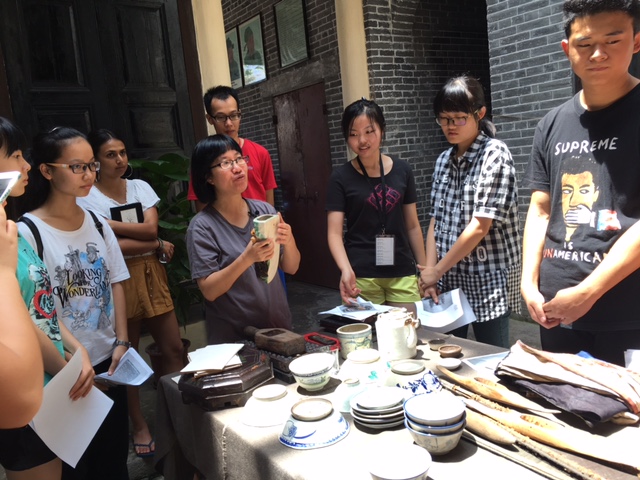
Professor Tan giving a seminar on local artifacts to a summer conference of Chinese high school students. She is standing under the sky well of one of the two ancestral halls in Cangdong Village.
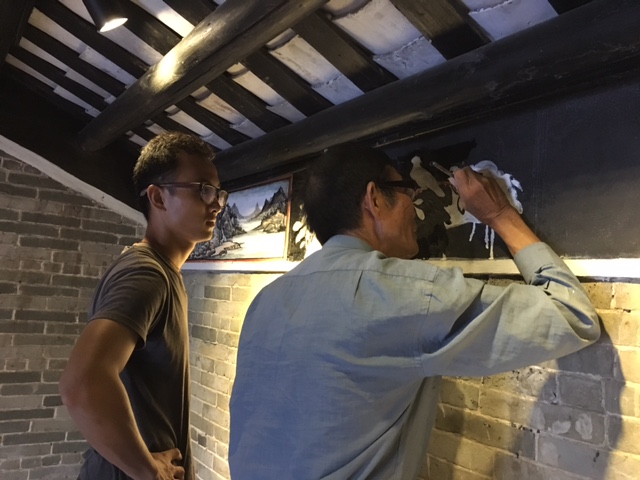
CJ observing the progress of Master Hu, a local fresco and stucco decoration craftsman. He was live demonstrating in Cangdong Village’s He Ting (禾厅) for that same summer conference of high school kids.
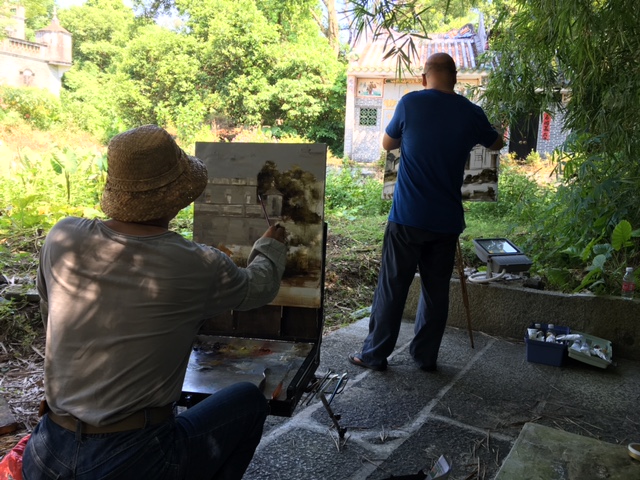
A group of artists visited from Jiangmen, Guangzhou, and downtown Kaiping to do some plein air pieces on the architecture and landscape at Cangdong Village. I think Professor Tan invited them to organise an exhibition at Cangdong Village in November. Not included in the picture is the Cangdong village head Nuan Shu (暖叔, as in warm uncle!), and his visiting grandsons, all of whom were sitting next to me in the shade, also watching the artists at work.
~
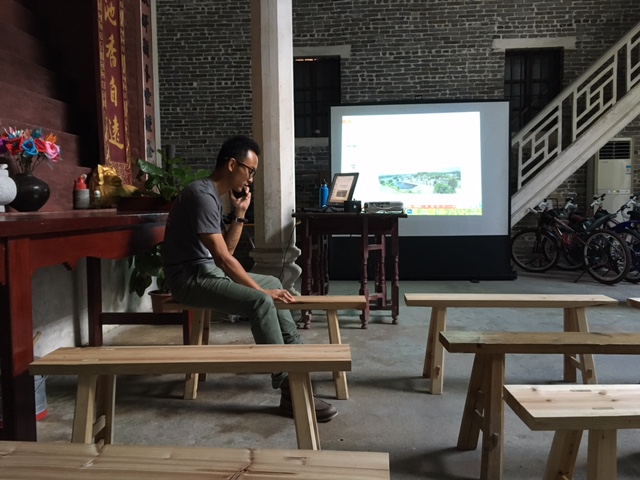
But to be really real, most of the action at Cangdong actually just consists of CJ answering calls from the Kaiping County Minister of Culture asking him to receive government officials’ callings.
~
Disclaimer: This is what I have observed in the Cangdong Project in five-six weeks of close interaction with the Cangdong Project members at the Tangkou hostel. All observations are personal. Nothing I have written was ever approved by the Cangdong Project leaders. I may have misinterpreted or misunderstood things.
~
Updating on myself: the typhoon Nida has passed me by and I have arrived safely in Guangzhou this afternoon. (Or, yesterday afternoon. Eek, it’s after midnight already.) Onto the next chapter of my search for my undergraduate art history thesis slash postgraduate research grant material! I am once again irrevocably behind on updates! I might try to backtrack to write about visiting Xinhui with Tony and Jim, and also my solo visits to Majianglong and Jinjiangli, and also my visit to my mom’s village in Chikan … but the days pass me by faster than typhoon winds!

